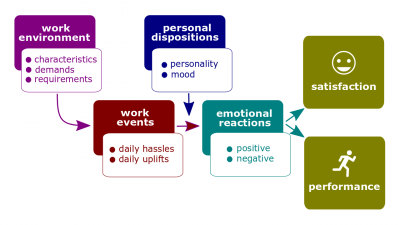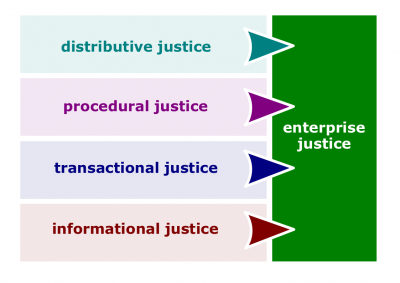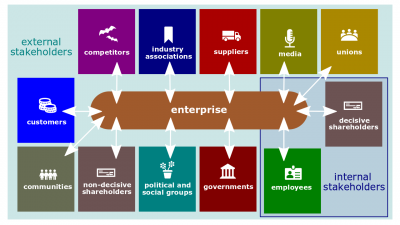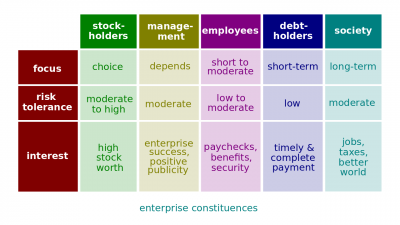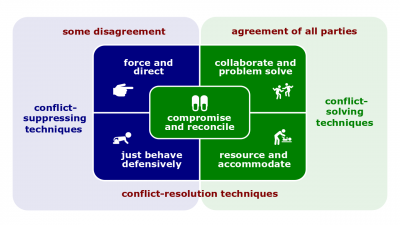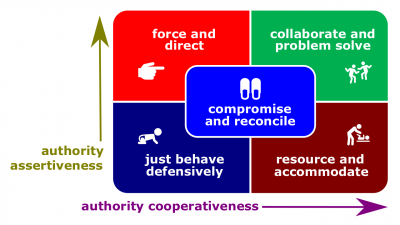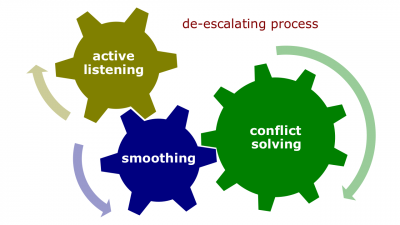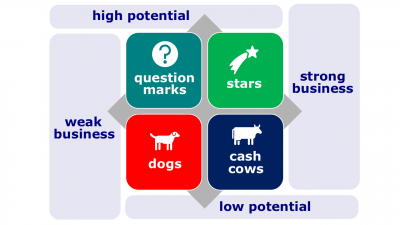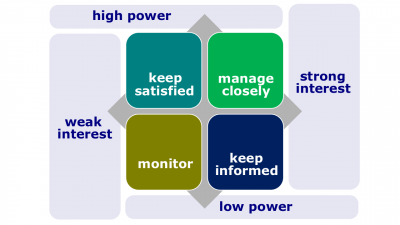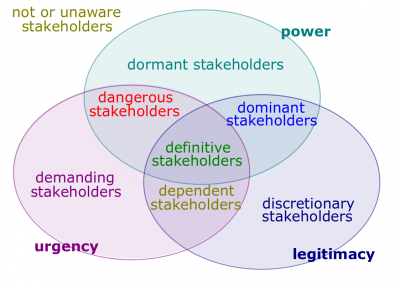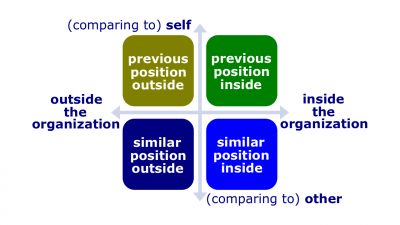Difference between revisions of "Relationship Management Quarter"
(→Concepts) |
|||
| (26 intermediate revisions by the same user not shown) | |||
| Line 13: | Line 13: | ||
#*[[Informational justice]]. The degree to which employees are provided truthful explanations for decisions. | #*[[Informational justice]]. The degree to which employees are provided truthful explanations for decisions. | ||
#*[[Procedural justice]]. The perceived fairness of the process used to determine the distribution of rewards. | #*[[Procedural justice]]. The perceived fairness of the process used to determine the distribution of rewards. | ||
| − | #*[[ | + | #*[[Interpersonal justice]]. The degree to which employees are treated with dignity and respect. |
#'''[[Information distribution]]'''. Making needed information available to those [[stakeholder]]s who are selected to obtain information in a timely manner. | #'''[[Information distribution]]'''. Making needed information available to those [[stakeholder]]s who are selected to obtain information in a timely manner. | ||
#*[[Stakeholder resource]]. Informational and/or other assets that can be drawn on by a [[stakeholder]] in order to stay informed about and/or be benefited by an [[enterprise]]. | #*[[Stakeholder resource]]. Informational and/or other assets that can be drawn on by a [[stakeholder]] in order to stay informed about and/or be benefited by an [[enterprise]]. | ||
| − | |||
#'''[[Public relations]]'''. The professional maintenance of a favorable public image by an [[enterprise]] or a famous person. | #'''[[Public relations]]'''. The professional maintenance of a favorable public image by an [[enterprise]] or a famous person. | ||
#*[[Newsletter]]. A bulletin issued periodically to the [[stakeholder]]s of a [[group]], [[business]], or [[enterprise]]. | #*[[Newsletter]]. A bulletin issued periodically to the [[stakeholder]]s of a [[group]], [[business]], or [[enterprise]]. | ||
| Line 47: | Line 46: | ||
#*[[Perceived organizational support]]. The degree to which employees believe an organization values their contribution and cares about their well-being. | #*[[Perceived organizational support]]. The degree to which employees believe an organization values their contribution and cares about their well-being. | ||
#*[[Organizational commitment]]. The degree to which an employee identifies with a particular organization and its goals and wishes to maintain membership in that organization. | #*[[Organizational commitment]]. The degree to which an employee identifies with a particular organization and its goals and wishes to maintain membership in that organization. | ||
| − | |||
#*[[Workplace spirituality]]. The recognition that people have an inner life that nourishes and is nourished by meaningful work that takes place in the context of community. | #*[[Workplace spirituality]]. The recognition that people have an inner life that nourishes and is nourished by meaningful work that takes place in the context of community. | ||
#*[[Sexual harassment]]. Any unwanted action or activity of a sexual nature that explicitly or implicitly affects an individual's employment, performance, or work environment. | #*[[Sexual harassment]]. Any unwanted action or activity of a sexual nature that explicitly or implicitly affects an individual's employment, performance, or work environment. | ||
| Line 54: | Line 52: | ||
#*[[Participative management]]. A process in which subordinates share a significant degree of decision-making power with their immediate superiors. | #*[[Participative management]]. A process in which subordinates share a significant degree of decision-making power with their immediate superiors. | ||
#*[[Employee empowerment]]. Giving employees more [[authority]] (power) to make decisions through [[decentralization]] and/or [[participative decision-making]]. | #*[[Employee empowerment]]. Giving employees more [[authority]] (power) to make decisions through [[decentralization]] and/or [[participative decision-making]]. | ||
| + | #'''[[Conflict management]]'''. The use of [[conflict resolution technique|resolution]] and [[conflict-stimulation|stimulation technique]]s to achieve the desired level of [[conflict]]. In simple words, ''conflict management'' refers to handling a [[conflict]]. | ||
| + | #*[[Conflict resolution]]. [[Conflict management]] intended to resolve the [[conflict]]. | ||
| + | #*[[Conflict stimulation]]. [[Conflict management]] intended to create new [[conflict]]s or intensify the existing ones. | ||
===Roles=== | ===Roles=== | ||
| Line 59: | Line 60: | ||
#*[[External stakeholder]]. A [[stakeholder]] who indirectly contributes and/or may contribute to [[business process|business]] and/or [[management process]]es of an [[enterprise]], as well as uses its [[enterprise outcome|outcome]]s. | #*[[External stakeholder]]. A [[stakeholder]] who indirectly contributes and/or may contribute to [[business process|business]] and/or [[management process]]es of an [[enterprise]], as well as uses its [[enterprise outcome|outcome]]s. | ||
#*[[Internal stakeholder]]. A [[stakeholder]] who directly contributes to [[business process|business]] and/or [[management process]]es of an [[enterprise]]. | #*[[Internal stakeholder]]. A [[stakeholder]] who directly contributes to [[business process|business]] and/or [[management process]]es of an [[enterprise]]. | ||
| + | #[[File:Enterprise-constituencies.png|400px|thumb|right|[[Enterprise constituency]]]]'''[[Enterprise constituency]]'''. | ||
#'''[[Work council]]'''. A group of nominated or elected employees who must be consulted when management makes decisions involving personnel. | #'''[[Work council]]'''. A group of nominated or elected employees who must be consulted when management makes decisions involving personnel. | ||
#*[[Board representative]]. An employee who sits on a company's board of directors and represents the interests of the firm's employees. | #*[[Board representative]]. An employee who sits on a company's board of directors and represents the interests of the firm's employees. | ||
| − | |||
#'''[[Labor union]]'''. An organization that represents workers and seeks to protect their interests through collective bargaining. | #'''[[Labor union]]'''. An organization that represents workers and seeks to protect their interests through collective bargaining. | ||
#*[[Allied stakeholder]]. A [[stakeholder]] who is interested in success of the [[enterprise]]. [[Allied stakeholder]]s can include, but are not limited to direct managers, [[subject matter expert]]s, account managers, salespeople, and legal officers. | #*[[Allied stakeholder]]. A [[stakeholder]] who is interested in success of the [[enterprise]]. [[Allied stakeholder]]s can include, but are not limited to direct managers, [[subject matter expert]]s, account managers, salespeople, and legal officers. | ||
#*[[Adversary stakeholder]]. A [[stakeholder]] who is interested in failure of the [[enterprise]]. [[Adversary stakeholder]]s usually include [[competitor]]s and may include concerned communities, former customers, political groups, social groups, etc. | #*[[Adversary stakeholder]]. A [[stakeholder]] who is interested in failure of the [[enterprise]]. [[Adversary stakeholder]]s usually include [[competitor]]s and may include concerned communities, former customers, political groups, social groups, etc. | ||
| + | #'''[[Whistle-blower]]'''. An individual who raises ethical concerns or issues to others or reports unethical practices by their employer to outsiders. | ||
===Methods=== | ===Methods=== | ||
#'''[[Survey feedback]]'''. The use of questionnaires to identify discrepancies among stakeholder perceptions; discussion follows, and remedies are suggested. | #'''[[Survey feedback]]'''. The use of questionnaires to identify discrepancies among stakeholder perceptions; discussion follows, and remedies are suggested. | ||
| + | #'''[[Filtering]]'''. A sender's deliberate manipulation of information to make it appear more favorable or be seen more favorably by the receiver. | ||
| + | #'''[[Conflict-management technique]]'''. An established [[procedure]], either a [[conflict-resolution technique|conflict-resolution]] or [[conflict-stimulation technique]], for [[conflict management]]. | ||
| + | #*[[File:Solve-vs-suppress.png|400px|thumb|right|[[Conflict-resolution technique]]]][[Conflict-resolution technique]]. An established way of resolving the [[conflict]]. | ||
| + | #[[File:Conflict-resolution.png|400px|thumb|right|[[Conflict-resolution strategy]]]]'''[[Conflict-resolution strategy]]'''. A [[policy]] behind a [[conflict-resolution technique]] to be chosen in order to resolve the [[conflict]]. | ||
| + | #*[[Just behave defensively]]. The [[conflict-resolution strategy]] behind [[conflict-suppressing technique]]s that involve retreating from an actual or potential conflict situation; postponing active involvement to be better prepared or to wait the [[conflict]] to be resolved by others and/or to fade with time. | ||
| + | #*[[Resource and accommodate]]. The [[conflict-resolution strategy]] behind [[conflict-solving technique]]s that involve (a) adding resources to solve the [[conflict]] and/or (b) conceding one's position to the needs of others to maintain harmony and relationships. | ||
| + | #*[[Compromise and reconcile]]. The [[conflict-resolution strategy]] behind [[conflict-solving technique]]s that involve searching for solutions that bring some degree of satisfaction to all parties in order to temporarily or partially resolve the conflict. | ||
| + | #*[[Force and direct]]. The [[conflict-resolution strategy]] behind [[conflict-suppressing technique]]s that involve pushing one's viewpoint at the expense of others; offering only win-lose solutions, usually enforced through a power position to resolve an emergency. | ||
| + | #*[[Collaborate and problem solve]]. The [[conflict-resolution strategy]] behind [[conflict-solving technique]]s that involve incorporating multiple viewpoints and insights from differing perspectives; requires a cooperative attitude and open dialogue that typically leads to consensus and commitment. | ||
| + | #[[File:De-escalating.png|400px|thumb|right|[[De-escalating]]]]'''[[De-escalating]]'''. Decreasing the [[conflict]] in extent, volume, or scope especially through (a) [[active listening]], (b) [[smoothing]], and (c) [[conflict-solving technique]]s. | ||
| + | #*[[Smoothing]]. Emphasizing common interests and areas of agreement between the conflicting parties while playing down differences in order to ease the tensions. | ||
| + | #'''[[Conflict-stimulation technique]]'''. An established way of stimulating the [[conflict]]. | ||
| + | #*[[Provocative communication]]. Using ambiguous or threatening messages to increase conflict levels. | ||
| + | #*[[Bringing in outsiders]]. Adding employees to a group whose backgrounds, values, attitudes, or managerial styles differ from those of present members. | ||
| + | #*[[Stressing the structure]]. Realigning [[workgroup]]s, altering rules and regulations, increasing interdependence, and making similar structural changes to disrupt the status quo. | ||
| + | #*[[Appointing a devil's advocate]]. Designating a critic to purposely argue against the majority positions held by the group. | ||
| + | #'''[[Conflict-solving technique]]'''. An established way of resolving the [[conflict]] having all the parties of the conflict]] to agree on its solution. [[Conflict-solving technique]]s follow [[collaborate and problem solve]], [[resource and accommodate]], and [[compromise and reconcile]] [[Conflict-resolution strategy|strategies]].<blockquote><table class="wikitable" width=100%><tr><td style="text-align:center;">[[Conflict-resolution strategy|Strategy]]</td><th>[[Conflict-solving technique]]</th></tr><tr><th>[[Resource and accommodate]]</th><td><ul><li>[[Accommodating]]. The willingness of one party in a [[conflict]] to place the opponent's interests above his or her own; conceding one's position to the needs of others to maintain harmony and relationships.</li><li>[[Conflict crashing]]. Expansion of the resources can create a win-win solution especially when a conflict is caused by the scarcity of a resource (for example, money, promotion, opportunities, office space, etc.).</li></ul></td></tr><tr><th>[[Compromise and reconcile]]</th><td><ul><li>[[Compromising]]. A situation in which each party to a [[conflict]] is willing to give up something in order to gain something; each party to the conflict gives up something of value.</li><li>[[Engaging a third party]]. </li><li>[[Distributive bargaining]]. </li><li>[[Engaging a conciliator]]. </li></ul></td></tr><tr><th>[[Collaborate and problem solve]]</th><td><ul><li>[[Collaborating]]. A situation in which the parties to a [[conflict]] each desire to satisfy fully the concerns of all parties.</li><li>[[Problem solving]]. Face-to-face meeting of the conflicting parties for the purpose of identifying the problem and resolving it through open discussion.</li><li>[[Integrative bargaining]]. </li><li>[[Engaging a mediator]]. </li><li>[[Superordinate goal setting]]. Creating a shared goal that cannot be attained without the cooperation of each of the conflicting parties.</li><li>[[Improving the human variables]]. Using behavioral change techniques such as human relations training to alter attitudes and behaviors that cause conflict.</li><li>[[Improving the structural variables]]. Changing the formal organization structure and the interaction patterns of conflicting parties through job redesign, transfers, creation of coordinating positions, and the like.</li></ul></td></tr></table></blockquote> | ||
| + | #'''[[Conflict-suppressing technique]]'''. An established way of resolving the [[conflict]] not having all the parties of the conflict]] to agree on its solution. [[Conflict-suppressing technique]]s follow [[just behave defensively]] and [[force and direct]] [[Conflict-resolution strategy|strategies]].<blockquote><table class="wikitable" width=100%><tr><td style="text-align:center;">[[Conflict-suppressing strategy|Strategy]]</td><th>[[Conflict-solving technique]]</th></tr><tr><th>[[Force and direct]]</th><td><ul><li>[[Competing]]. A desire to satisfy one's interests, regardless of the impact on the other party of the conflict.</li><li>[[Authoritative conflict-resolution]]. In a formal setting, an [[authority]] may use its powers to resolve the conflict and then communicate its desires to the parties involved.</li><li>[[Engaging an arbitrator]]. </li></ul></td></tr><tr><th>[[Defensive behavior|Behave defensively]]</th><td style="text-align:center;">A variety of [[defensive-behavior technique]]s.</td></tr></table></blockquote> | ||
| + | #'''[[Good Cop/Bad Cop]]'''. | ||
===Instruments=== | ===Instruments=== | ||
| − | #[[File:Equity-comparison.png|400px|thumb|right|[[Equity comparison]]]]'''[[Equity comparison]]'''. | + | #[[File:Bcg-matrix.png|400px|thumb|right|[[BCG matrix]]]]'''[[Stakeholder-analysis tool]]'''. A tangible and/or software implement used to analyze [[stakeholder]]s. |
| + | #*[[File:Power-interest.png|400px|thumb|right|[[Power-interest grid]]]][[Power-interest grid]] (or [[power-interest matrix]]). A [[stakeholder-analysis tool]] designed to help categorize [[stakeholder]]s depending on their power and interest in the [[enterprise effort]], as well as suggest [[strategy|strategi]]es needed to handle them. | ||
| + | #*[[Influence-interest grid]]. A [[stakeholder-analysis tool]] designed to help categorize [[stakeholder]]s depending on their interest in and influence on the [[enterprise effort]]. | ||
| + | #*[[Power-interest-attitude grouping]]. A [[stakeholder-analysis tool]] designed to help categorize [[stakeholder]]s depending on their power, interest in, and attitude to the [[enterprise effort]]. | ||
| + | #*[[File:Salience.png|400px|thumb|right|[[Salience model]]]][[Salience model]]. A [[stakeholder-analysis tool]] that classifies [[stakeholder]]s depending on three attributes, which are (1) power, (2) legitimacy, and (3) urgency. | ||
| + | #[[File:Equity-comparison.png|400px|thumb|right|[[Equity comparison]]]]'''[[Equity comparison]]'''. One's examination of two or more items related to equity and performance in order to establish similarities and dissimilarities in equity rewards. | ||
#*[[Comparison to self inside]]. | #*[[Comparison to self inside]]. | ||
#*[[Comparison to self outside]]. | #*[[Comparison to self outside]]. | ||
#*[[Comparison to other inside]]. | #*[[Comparison to other inside]]. | ||
#*[[Comparison to other outside]]. | #*[[Comparison to other outside]]. | ||
| − | |||
| − | |||
#'''[[Relationship map]]'''. A business model that shows the organizational context in terms of the relationships that exist among the organization, external customers, and providers. | #'''[[Relationship map]]'''. A business model that shows the organizational context in terms of the relationships that exist among the organization, external customers, and providers. | ||
#*[[Relationship]]. A defined association between concepts, classes or entities. Relationships are usually named and include the cardinality of the association. | #*[[Relationship]]. A defined association between concepts, classes or entities. Relationships are usually named and include the cardinality of the association. | ||
| Line 86: | Line 110: | ||
#*[[Ambient experiential]]. | #*[[Ambient experiential]]. | ||
#*[[Public transportation]]. | #*[[Public transportation]]. | ||
| − | |||
#*[[Digital advertising]] (such as web-based, mobile and mobile applications) | #*[[Digital advertising]] (such as web-based, mobile and mobile applications) | ||
#*[[Specialty advertising]] (on items such as matchboxes, pencils, calendars, telephone pads, shopping bags and so on) | #*[[Specialty advertising]] (on items such as matchboxes, pencils, calendars, telephone pads, shopping bags and so on) | ||
#*[[Handout media]]. catalogs, samples, handouts, brochures, newsletters and so on. | #*[[Handout media]]. catalogs, samples, handouts, brochures, newsletters and so on. | ||
| + | #'''[[Direct media]]''' ([[Direct media|DM]]). | ||
| + | #*[[Performance report]]. A [[report]] that contains enterprise performance information and is distributed to selected [[stakeholder]]s. Usually, this ''report'' includes key status updates, progress measurements, and estimates. | ||
| + | #*[[Exception report]]. A [[report]] that includes major variations from plan (not all variations) and is distributed to selected [[stakeholder]]s. | ||
| + | #*[[FYI message]]. The abbreviation ''FYI'' stays for "[[For your information]]" and is commonly used in email, instant messaging or memo and messages, typically in the message subject, to flag the message as an informational message, with the intent to communicate to the receiver that he/she may be interested in the topic, but is not required to perform any action. [[FYSA]] (or "[[For your situation awareness]]") is another abbreviation that serves a similar purpose. | ||
#'''[[Search engine marketing]]''' (SEM, keyword marketing in search engines) | #'''[[Search engine marketing]]''' (SEM, keyword marketing in search engines) | ||
#*[[Search engine optimization]] (SEO) | #*[[Search engine optimization]] (SEO) | ||
| Line 120: | Line 147: | ||
*#[[Targetedly-supported involvement]]. [[High-involvement work practice]] to provide [[associated stakeholder]]s with specific support; for instance, [[self-efficacy source]]s. | *#[[Targetedly-supported involvement]]. [[High-involvement work practice]] to provide [[associated stakeholder]]s with specific support; for instance, [[self-efficacy source]]s. | ||
| − | ''[[Market | + | ''[[Market Intercourses Quarter]] is the successor lecture. In the [[enterprise planning]] series, the next lecture is [[Leadership Quarter]].'' |
==Materials== | ==Materials== | ||
| Line 130: | Line 157: | ||
==See also== | ==See also== | ||
| + | |||
| + | [[Category:Septem Artes Administrativi]][[Category:Lecture notes]] | ||
Latest revision as of 01:06, 14 June 2023
Relationship Management Quarter (hereinafter, the Quarter) is a lecture introducing the learners to social management primarily through key topics related to stakeholder arrangements. The Quarter is the last of four lectures of Social Quadrivium, which is the fifth of seven modules of Septem Artes Administrativi (hereinafter, the Course). The Course is designed to introduce the learners to general concepts in business administration, management, and organizational behavior.
Contents
Outline
User Experience Quarter is the predecessor lecture. In the enterprise planning series, the previous lecture is Talent Management Quarter.
Concepts
- Stakeholder relationship management.
- Customer relationship management (CRM). Management of relationships with the customers.
- Affective events theory. A model that suggests that workplace events cause emotional reactions on the part of employees, which then influence workplace attitudes and behaviors.
- Enterprise justice. An overall perception of what is fair in the workplace, composed of distributive, procedural, informational, and interpersonal justice.
- Distributive justice. Perceived fairness of the amount and allocation of rewards among individuals.
- Informational justice. The degree to which employees are provided truthful explanations for decisions.
- Procedural justice. The perceived fairness of the process used to determine the distribution of rewards.
- Interpersonal justice. The degree to which employees are treated with dignity and respect.
- Information distribution. Making needed information available to those stakeholders who are selected to obtain information in a timely manner.
- Stakeholder resource. Informational and/or other assets that can be drawn on by a stakeholder in order to stay informed about and/or be benefited by an enterprise.
- Public relations. The professional maintenance of a favorable public image by an enterprise or a famous person.
- Newsletter. A bulletin issued periodically to the stakeholders of a group, business, or enterprise.
- Press release. An official statement issued to press giving information on a particular matter.
- Media planning. The process of creating a media plan. Media planning is usually outsourced to a media agency and entails sourcing and selecting optimal media platforms for a client's brand or product to use. The job of media planning is to determine the best combination of media to achieve the marketing campaign objectives.
- Organizational climate. The shared perceptions organizational members have about their organization and work environment.
- Mission. The purpose of an organization.
- Organizational process. One of the ways that organizational work is done.
- Ritual. A repetitive sequence of activities that express and reinforce the key values of the organization, which goals are most important, which people are important, and which are expendable.
- Small business. An organization that is independently owned, operated, and financed; has fewer than 100 employees; doesn't necessarily engage in any new or innovative practices; and has relatively little impact on its industry.
- Workspace. Space in which to work.
- Workplace. A place where people work, such as an office or factory.
- Organizational demography. The degree to which members of a work unit share a common demographic attribute, such as age, sex, race, educational level, or length of service in an organization, and the impact of this attribute on turnover.
- Open-book management. A motivational approach in which an organization's financial statements (the "books") are shared with all employees.
- Value-based management. The organization's values guide employees in the way they do their jobs.
- Organizational value. The primary or dominant value that is accepted throughout the organization.
- Rule. An explicit statement that tells managers what can or cannot be done.
- Social responsibility. A business' intention, beyond its legal and economic obligations, to do the right things and act in ways that are good for society.
- Corporate social responsibility. An organization's self-regulated actions to benefit society or the environment beyond what is required by law.
- Affirmative action. Organizational programs that enhance the status of members of protected groups.
- Glass ceiling. The invisible barrier that separates women and minorities from top management positions.
- Ethical work climate. The shared concept of right and wrong behavior in the workplace that reflects the true values of the organization and shapes the ethical decision making of its members.
- Code of ethics. A formal statement of an organization's primary values and the ethical rules it expects its employees to follow.
- Stakeholder engagement. An individual's involvement with, satisfaction with, and enthusiasm for the enterprise he or she works for or is involved with.
- Perceived organizational support. The degree to which employees believe an organization values their contribution and cares about their well-being.
- Organizational commitment. The degree to which an employee identifies with a particular organization and its goals and wishes to maintain membership in that organization.
- Workplace spirituality. The recognition that people have an inner life that nourishes and is nourished by meaningful work that takes place in the context of community.
- Sexual harassment. Any unwanted action or activity of a sexual nature that explicitly or implicitly affects an individual's employment, performance, or work environment.
- Stakeholder participation. A participative process that uses the input of stakeholders to increase their commitment to enterprise success.
- Representative participation. A system in which workers participate in organizational decision making through a small group of representative employees.
- Participative management. A process in which subordinates share a significant degree of decision-making power with their immediate superiors.
- Employee empowerment. Giving employees more authority (power) to make decisions through decentralization and/or participative decision-making.
- Conflict management. The use of resolution and stimulation techniques to achieve the desired level of conflict. In simple words, conflict management refers to handling a conflict.
- Conflict resolution. Conflict management intended to resolve the conflict.
- Conflict stimulation. Conflict management intended to create new conflicts or intensify the existing ones.
Roles
- Stakeholder. Anyone in the enterprise environment that is, can be, or perceives him-, her-, or itself to be affected by an enterprise's decisions and actions. In Agile methodology, a stakeholder is anyone outside the team who has an interest in the product that the team is producing.
- External stakeholder. A stakeholder who indirectly contributes and/or may contribute to business and/or management processes of an enterprise, as well as uses its outcomes.
- Internal stakeholder. A stakeholder who directly contributes to business and/or management processes of an enterprise.
- Enterprise constituency.
- Work council. A group of nominated or elected employees who must be consulted when management makes decisions involving personnel.
- Board representative. An employee who sits on a company's board of directors and represents the interests of the firm's employees.
- Labor union. An organization that represents workers and seeks to protect their interests through collective bargaining.
- Allied stakeholder. A stakeholder who is interested in success of the enterprise. Allied stakeholders can include, but are not limited to direct managers, subject matter experts, account managers, salespeople, and legal officers.
- Adversary stakeholder. A stakeholder who is interested in failure of the enterprise. Adversary stakeholders usually include competitors and may include concerned communities, former customers, political groups, social groups, etc.
- Whistle-blower. An individual who raises ethical concerns or issues to others or reports unethical practices by their employer to outsiders.
Methods
- Survey feedback. The use of questionnaires to identify discrepancies among stakeholder perceptions; discussion follows, and remedies are suggested.
- Filtering. A sender's deliberate manipulation of information to make it appear more favorable or be seen more favorably by the receiver.
- Conflict-management technique. An established procedure, either a conflict-resolution or conflict-stimulation technique, for conflict management.
- Conflict-resolution technique. An established way of resolving the conflict.
- Conflict-resolution strategy. A policy behind a conflict-resolution technique to be chosen in order to resolve the conflict.
- Just behave defensively. The conflict-resolution strategy behind conflict-suppressing techniques that involve retreating from an actual or potential conflict situation; postponing active involvement to be better prepared or to wait the conflict to be resolved by others and/or to fade with time.
- Resource and accommodate. The conflict-resolution strategy behind conflict-solving techniques that involve (a) adding resources to solve the conflict and/or (b) conceding one's position to the needs of others to maintain harmony and relationships.
- Compromise and reconcile. The conflict-resolution strategy behind conflict-solving techniques that involve searching for solutions that bring some degree of satisfaction to all parties in order to temporarily or partially resolve the conflict.
- Force and direct. The conflict-resolution strategy behind conflict-suppressing techniques that involve pushing one's viewpoint at the expense of others; offering only win-lose solutions, usually enforced through a power position to resolve an emergency.
- Collaborate and problem solve. The conflict-resolution strategy behind conflict-solving techniques that involve incorporating multiple viewpoints and insights from differing perspectives; requires a cooperative attitude and open dialogue that typically leads to consensus and commitment.
- De-escalating. Decreasing the conflict in extent, volume, or scope especially through (a) active listening, (b) smoothing, and (c) conflict-solving techniques.
- Smoothing. Emphasizing common interests and areas of agreement between the conflicting parties while playing down differences in order to ease the tensions.
- Conflict-stimulation technique. An established way of stimulating the conflict.
- Provocative communication. Using ambiguous or threatening messages to increase conflict levels.
- Bringing in outsiders. Adding employees to a group whose backgrounds, values, attitudes, or managerial styles differ from those of present members.
- Stressing the structure. Realigning workgroups, altering rules and regulations, increasing interdependence, and making similar structural changes to disrupt the status quo.
- Appointing a devil's advocate. Designating a critic to purposely argue against the majority positions held by the group.
- Conflict-solving technique. An established way of resolving the conflict having all the parties of the conflict]] to agree on its solution. Conflict-solving techniques follow collaborate and problem solve, resource and accommodate, and compromise and reconcile strategies.
Strategy Conflict-solving technique Resource and accommodate - Accommodating. The willingness of one party in a conflict to place the opponent's interests above his or her own; conceding one's position to the needs of others to maintain harmony and relationships.
- Conflict crashing. Expansion of the resources can create a win-win solution especially when a conflict is caused by the scarcity of a resource (for example, money, promotion, opportunities, office space, etc.).
Compromise and reconcile - Compromising. A situation in which each party to a conflict is willing to give up something in order to gain something; each party to the conflict gives up something of value.
- Engaging a third party.
- Distributive bargaining.
- Engaging a conciliator.
Collaborate and problem solve - Collaborating. A situation in which the parties to a conflict each desire to satisfy fully the concerns of all parties.
- Problem solving. Face-to-face meeting of the conflicting parties for the purpose of identifying the problem and resolving it through open discussion.
- Integrative bargaining.
- Engaging a mediator.
- Superordinate goal setting. Creating a shared goal that cannot be attained without the cooperation of each of the conflicting parties.
- Improving the human variables. Using behavioral change techniques such as human relations training to alter attitudes and behaviors that cause conflict.
- Improving the structural variables. Changing the formal organization structure and the interaction patterns of conflicting parties through job redesign, transfers, creation of coordinating positions, and the like.
- Conflict-suppressing technique. An established way of resolving the conflict not having all the parties of the conflict]] to agree on its solution. Conflict-suppressing techniques follow just behave defensively and force and direct strategies.
Strategy Conflict-solving technique Force and direct - Competing. A desire to satisfy one's interests, regardless of the impact on the other party of the conflict.
- Authoritative conflict-resolution. In a formal setting, an authority may use its powers to resolve the conflict and then communicate its desires to the parties involved.
- Engaging an arbitrator.
Behave defensively A variety of defensive-behavior techniques. - Good Cop/Bad Cop.
Instruments
- Stakeholder-analysis tool. A tangible and/or software implement used to analyze stakeholders.
- Power-interest grid (or power-interest matrix). A stakeholder-analysis tool designed to help categorize stakeholders depending on their power and interest in the enterprise effort, as well as suggest strategies needed to handle them.
- Influence-interest grid. A stakeholder-analysis tool designed to help categorize stakeholders depending on their interest in and influence on the enterprise effort.
- Power-interest-attitude grouping. A stakeholder-analysis tool designed to help categorize stakeholders depending on their power, interest in, and attitude to the enterprise effort.
- Salience model. A stakeholder-analysis tool that classifies stakeholders depending on three attributes, which are (1) power, (2) legitimacy, and (3) urgency.
- Equity comparison. One's examination of two or more items related to equity and performance in order to establish similarities and dissimilarities in equity rewards.
- Relationship map. A business model that shows the organizational context in terms of the relationships that exist among the organization, external customers, and providers.
- Relationship. A defined association between concepts, classes or entities. Relationships are usually named and include the cardinality of the association.
- Entity-relationship diagram. An entity-relationship diagram is a graphical representation of the entities relevant to a chosen problem domain, the relationships between them, and their attributes.
- Media mix. A combination of communication and media channels use that is utilized to meet marketing objectives, such as social media platforms and magazines.
- Newspaper
- Magazine. (consumer and trade)
- Outdoor billboard.
- Ambient experiential.
- Public transportation.
- Digital advertising (such as web-based, mobile and mobile applications)
- Specialty advertising (on items such as matchboxes, pencils, calendars, telephone pads, shopping bags and so on)
- Handout media. catalogs, samples, handouts, brochures, newsletters and so on.
- Direct media (DM).
- Performance report. A report that contains enterprise performance information and is distributed to selected stakeholders. Usually, this report includes key status updates, progress measurements, and estimates.
- Exception report. A report that includes major variations from plan (not all variations) and is distributed to selected stakeholders.
- FYI message. The abbreviation FYI stays for "For your information" and is commonly used in email, instant messaging or memo and messages, typically in the message subject, to flag the message as an informational message, with the intent to communicate to the receiver that he/she may be interested in the topic, but is not required to perform any action. FYSA (or "For your situation awareness") is another abbreviation that serves a similar purpose.
- Search engine marketing (SEM, keyword marketing in search engines)
- Social media.
- Television.
- Radio.
- Customer relationship management software (CRM software).
Results
- Media plan. Document describing objectives, strategy, tactics, resource allocation, and media schedule and media mix to be used in reaching a targeted audience.
Practices
- High-involvement work practice. Work practice designed to elicit greater input or involvement from associated stakeholders, especially workers, in order to lead to both high individual and high organizational performance.
- Decision-making involvement. High-involvement work practice to allocate more power to make decisions and/or to participate in decision-making to associated stakeholders.
- Informational involvement. High-involvement work practice to share more information among associated stakeholders.
- Explicitly-rewarded involvement. High-involvement work practice to reward associated stakeholders for their specific performances, for instance, higher productivity or contributed ideas.
- Targetedly-supported involvement. High-involvement work practice to provide associated stakeholders with specific support; for instance, self-efficacy sources.
Market Intercourses Quarter is the successor lecture. In the enterprise planning series, the next lecture is Leadership Quarter.
